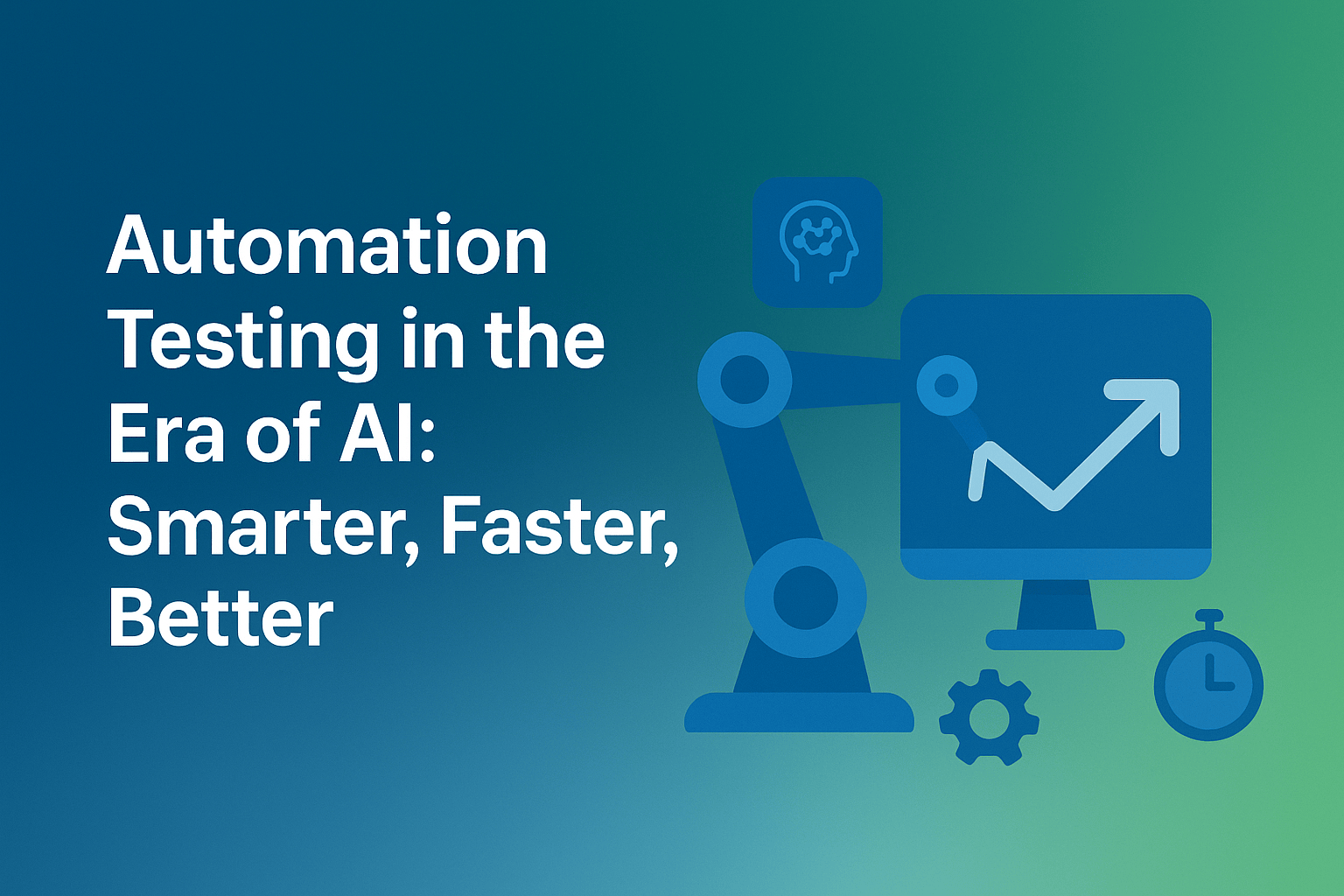Introduction
The rapid pace of digital transformation has forced enterprises to deliver software faster without compromising quality. Yet, 63% of organizations struggle with test automation at scale, according to the World Quality Report 2023–24 by Capgemini and Micro Focus (Capgemini). Traditional automation tools often lag when faced with complex applications, frequent UI changes, and growing demands for continuous delivery.
This is where Artificial Intelligence (AI) is transforming the landscape of software testing. By enhancing test creation, execution, and defect detection, AI brings unprecedented speed and intelligence to Quality Assurance (QA).
From Traditional Automation to AI-Powered Testing
| Aspect | Traditional Automation | AI – Powered Automation |
| Test Script Creation | Manual scripting, time-consuming | AI generates scripts automatically with NLP |
| Maintenance | High (fragile with UI changes) | Self-healing scripts reduce 60–70% effort |
| Defect Detection | Limited to pre-defined rules | Predictive defect analysis with ML models |
| Test Coverage | Static, repetitive | Dynamic, increases coverage by ~33% |
| Time-to-Test | Slower cycles | 50% faster execution |
This shift is not just technological — it’s strategic, helping businesses release reliable software faster while optimizing costs.
Key Statistics on AI in Testing
| Metric | Impact of AI |
| Testing Time Reduction | Up to 50% faster cycles |
| Test Coverage | Expanded by 33% |
| Defect Detection Speed | 75% faster |
| Bug Detection Accuracy | 35% improvement |
| ROI on AI Testing | Up to 400% in first year |
| Cost Reduction | As high as 80% savings |
These figures highlight that AI is not just a buzzword—it directly impacts speed, quality, and ROI.
Real-World Applications of AI in Testing
- Self-Healing Test Scripts
Traditional automation scripts often break with UI updates. AI tools like Testim and Mabl use self-healing mechanisms, reducing maintenance effort by up to 70%. - AI-Powered Test Case Generation
Using ML and NLP, AI can generate test cases from requirements or even plain-English descriptions, cutting manual effort by 80%. - Defect Prediction with Analytics
Predictive models analyze historical test results to flag high-risk modules. This improves test prioritization, reducing defect leakage into production. - Conversational Testing
With NLP-powered platforms, QA teams (even without coding expertise) can design automation workflows by writing natural language instructions.
Challenges & Risks
While AI offers unmatched speed, TechRadar reports that 50% of companies admit to releasing software with limited testing just to meet deadlines.
This “AI speed trap” highlights a key risk:
- Over-automation without governance may compromise quality assurance.
- Human oversight is still essential to validate AI-driven results.
The Future of AI in Automation Testing
| Future Trend | Projection |
| AI adoption in software testing | 80% of teams by 2026 |
| AI-driven QA shift | Preventive testing before coding |
| Integration into CI/CD | Real-time, continuous AI testing pipelines |
| AI-enhanced analytics | Instant defect insights with root-cause analysis |
By 2026, AI will not just support testing—it will redefine quality engineering, shifting QA from reactive defect detection to proactive defect prevention.
Conclusion
AI is reshaping automation testing by making it smarter, faster, and better. With self-healing scripts, predictive defect analysis, and conversational test generation, QA teams can focus less on repetitive tasks and more on quality strategy.
For businesses, the payoff is clear: reduced costs, faster delivery, and higher-quality products. But success lies in striking a balance—leveraging AI’s speed while ensuring human-driven quality oversight.
Organizations that adopt AI in their testing pipelines today will lead tomorrow’s software landscape, where quality and speed go hand-in-hand.







